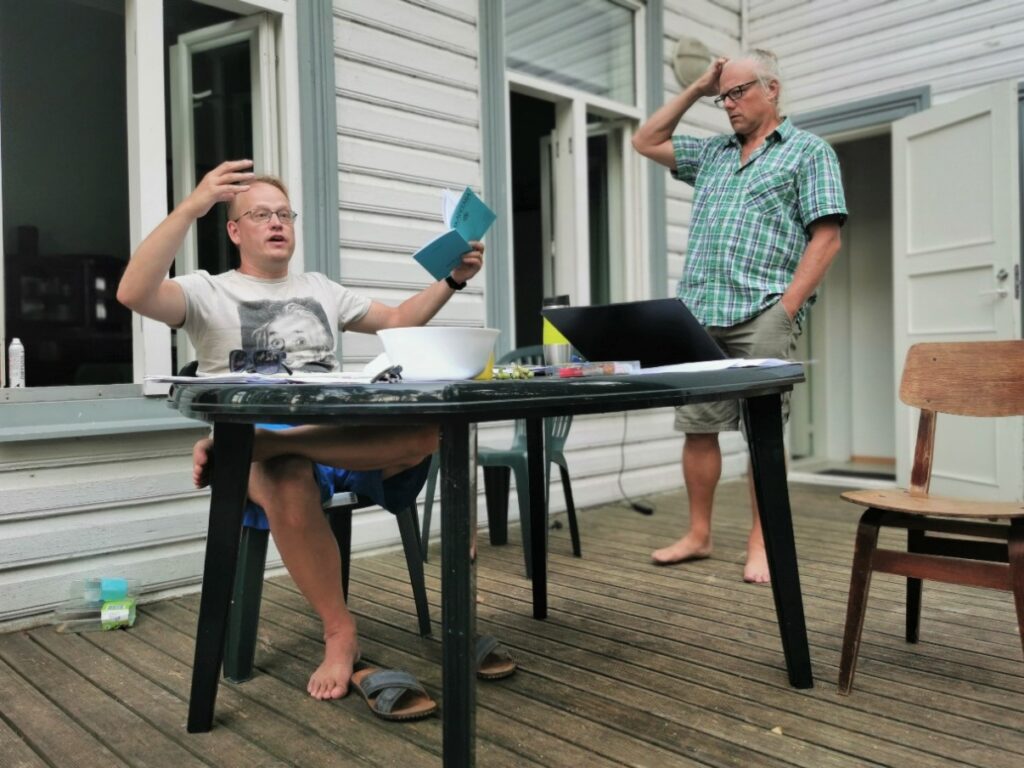Workshop on Nietzsche and Decadence in Käsmu in August 2022

Art and literary scholars and philosophers gather in scenic Käsmu – a former fishermen village on the Northern shore of Estonia, known for its marvellous small beaches and tiny wooden cabins – in order to analyse the complex dynamics between the polyvalent concept of decadence and the often contradictory ideas of Friedrich Nietzsche. The aim of this get-together which consists of twelve individual papers and informal discussions is to further Nietzschean decadence studies in Estonia with the hope of continuing with relevant events and seminars in future.
On August 18th, Jüri Lipping kick-starts the discussion with a talk about health, decadence and transition. Margus Vihalem’s paper concentrates on Nietzsche’s aesthetics that he understands as a certain overcoming of decadence. Leo Luks scrutinises Nietzsche’s approach to decadence and its unavoidable connections with his other key terms. Tiina Abel’s visually captivating presentation reads together Nietzsche’s ideas of self-creation and the aesthetics of the Estonian radical artist Eduard Wiiralt (1898–1954). The last paper of the day is given by Eduard Parhomenko who – with rich exemplary material – discusses Vassily Kandinsky and “the Dionysian grammar of abstract art”.
On August 19th, Hasso Krull’s morning presentation links the eternal recurrence in the thought system of three philosophers: Friedrich Nietzsche, Mircea Eliade ja Gilles Deleuze. Jaanus Sooväli after him focusses on the concepts of race, illness and variability in Nietzsche’s philosophy.
The next session digs into the work of A. H. Tammsaare (1878–1940) – one of the most canonised authors in Estonian literature who was deeply influenced by both Friedrich Nietzsche and decadent aesthetics. Mirjam Hinrikus’ paper analyses the Nietzschean decadence in the oeuvre of A. H. Tammsaare, especially in his novelette titled “Kärbes” (The Fly, 1917). Tiina Ann Kirss traces Nietzsche’s notion ressentiment in Tammsaare’s novel “Ma armastasin sakslast” (I loved a German, 1935).
Merlin Kirikal’s paper is about the Nietzschean New Woman in the short prose of Johannes Semper (1892–1970) – a highly complex, yet underresearched Estonian decadent-modernist author. Aare Pilv focusses on the translation history of Nietzsche and gives various fascinating examples of the first translation of “Thus spoke Zarathustra” into Estonian language by Ado Grenzstein (1846–1916). The symposium is tied together by the thought-provoking paper of Margus Ott titled “Lõige” (Cut)
Photos of the workshop by Eduard Parhomenko
